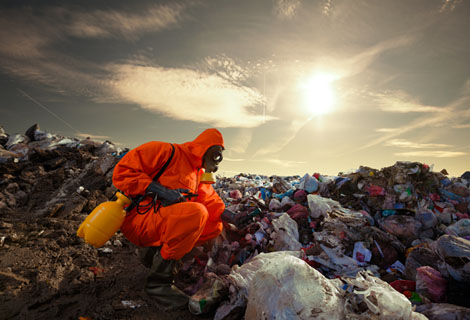Subscribe
Sign up for timely perspectives delivered to your inbox.
Hamish Chamberlayne, Head of SRI, follows up on the impact of a slew of new legislation that aims to reduce the irresponsible use of plastic and the opportunities for ‘early responders’ to new consumer demand to cut waste.
With consumer preferences shifting away from products considered to have a large ‘plastic footprint’, risks from the irresponsible use of plastic will likely begin to impact companies operating in areas that are as yet unregulated. The encouragement of the responsible use of plastics therefore spans industries, as well as supply chains.
Furthermore, the relevance of plastic use to investments varies greatly within companies and industries, meaning that there is no single solution or identifier for positive impact, investment risks or sustainability and investment opportunities.
Plastic was the dominant environmental issue of 2018 and this was reflected in legislation. Countries around the European Union (EU) set a precedent for plastic-limiting legislation, with bans on plastic microbeads and cotton buds1. In January 2018, China stopped accepting imports of plastic waste.
[caption id=”attachment_231669″ align=”alignnone” width=”470″] Source: Getty Images[/caption]
Source: Getty Images[/caption]
In October 2018, the European Parliament voted in favour of a ban on 10 types of single use plastic, covering 70% of marine litter items found on EU beaches2. The new legislation embodies the ‘polluter pays’ principle through additional reduction targets, taxes and tariffs. As a result, manufacturers may be required to provide 80-100% of the funds necessary for clean-up and waste avoidance attributable to their products3.
In the UK, a tax on the production and import of plastic packaging from April 2022 was proposed in last year’s Autumn budget. Subject to consultation, this tax will apply to plastic packaging which does not contain at least 30% recycled plastic, to transform financial incentives for manufacturers to produce more sustainable packaging.
Trends in legislation are not limited to China and the EU; more than 15 African countries have banned the use of plastic bags entirely4.
Evidence that demonstrates the impact of legislation can be seen in the introduction of a 5p charge for plastic carrier bags in the UK. This quickly led to an 85% reduction in their usage5.
We have very low exposure to plastic and have taken an active route towards reducing and managing our exposure to plastic pollution.
We holds shares in companies that are seeking to move to a more circular business model.
The world’s largest supplier of sports shoes and clothing, and one of the largest users of recycled plastic globally has 75% of all shoes and apparel containing some recycled material. Its new kits contain 12 recycled plastic drinking bottles converted to recycled polyester, including kits worn by France, England, Brazil and Portugal during 2018’s World Cup: in total, it has diverted nearly 5 billion plastic bottles from landfills since 2012.
[caption id=”attachment_231681″ align=”alignnone” width=”470″] Source: Getty Images[/caption]
Source: Getty Images[/caption]
One of Europe’s largest cardboard and paper recyclers provides corrugated packaging products. The backlash against plastic has been a positive revenue driver for the business as consumers switch to more sustainable packaging solutions.
[caption id=”attachment_231692″ align=”alignnone” width=”358″] Source: Janus Henderson Investors[/caption]
Source: Janus Henderson Investors[/caption]
We visited the company’s Fordham site, which is close to Newmarket in England, late last year. We met with senior executives to learn more about production at their largest UK site where they service customers. It is currently transitioning to supplying packaging solutions based on performance, rather than weight. The company uses modelling and scenario analysis software to optimise packaging based on how it is stored and passed through the supply chain, in order to achieve the best performance with the lowest possible paper weight. With 50% of paper sourced externally, tracking systems with smart barcodes are used to improve product traceability.
We were impressed by the company’s commitment to safety, customer service and minimising defect rates versus the industry. We were also encouraged to learn that their visible safety focus extended to their extensive transport operation, where its trucks have driver sensors to monitor alertness and additional sensors that warn drivers about the presence of nearby cyclists. Live satellite data is used to monitor deliveries and there is a great focus on maximising asset utilisation, for example, filling trailers for every leg of their journey.
A global leader in high performance insulation and envelope solutions for low carbon buildings uses recycled plastic within its manufacturing process. In March 2019, the company announced that it will now also be utilising recovered ocean plastic within its manufacturing process, made with raw materials from its plant near Barcelona, Spain. This plant recycles 250 million bottles each year and aims to quadruple this over six years. Energy efficient building insulation, made from ocean plastic, that saves carbon emissions is, we believe, a great approach to sustainability.
Unless otherwise indicated, the source for all data is Janus Henderson Investors.